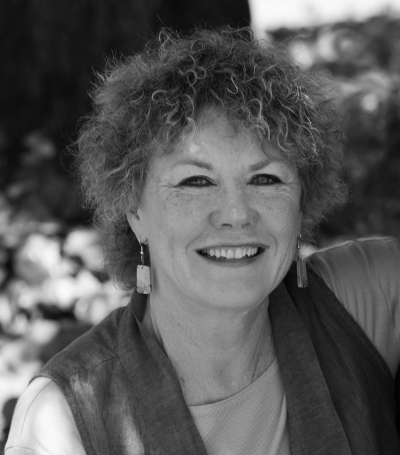Making the Most of Nature in Your Writing: Interview with Featured Member Judith Newton
A discussion between CWC members Linda Joy Myers, President of the National Memoir Writers Association and Judith Newton, Professor Emerita, Gender, Sexuality, and Women’s Studies at UC Davis
Editor’s note: Judith Newton is the featured member at next month’s CWC meeting. Catch her reading from her new book, before our keynote speaker LeeAnne Krusemark Sunday May 21st.
Making the Most of Nature in Your Writing
Linda: We both have new books coming out this spring. My book, Song of the Plains is a memoir about a family of women who abandon their daughters and about the ways their history contributed to this. Your book, Oink, is a mystery about the struggle between corporate and communal values in the university. I think it’s striking that we both chose elements of the natural world for our titles. What does it mean that you chose “Oink” for a title?
Judith: In writing Oink, a send up of the university for its increasing devotion to self-interest, competition, and profit, I also wanted to emphasize a counter perspective on life: a belief in the importance of values that are more about the common good. I planned to do this, in part, through my positive characterization of the protagonist’s campus community. It is comprised of faculty in women’s and ethnic studies who have come together to support each other and to resist having their programs defunded by an increasingly corporate-minded administration.
I wanted to do more, however, to engage the reader in feeling the importance of community, so I decided to suggest the interconnectedness of human and natural life in the very texture of the novel. To feel oneself in relation to the world of nature and to value the smallest forms of life are precursors to valuing human community as well. I decided that elements of nature which often appear as background in novels could subtly enforce a feeling of interrelation. There are many animals in the novel, for example, both domesticated and wild, which just appear as the characters are carrying on their lives. As Emily drives to meet with the biologist Tess Ryan, who she hopes will have important information, “a single red-tailed hawk flapped twice, launching itself into air. The sight of a hawk’s glide always brought me to life, making me feel as if I too were capable of soaring.”
Many of the characters also look like animals. The Chair of the English Department has a hound dog face which “seemed to sag into his tweed jacket.” The Vice Provost, with her long nose, resembles a hummingbird, and the greedy Peter Elliott, victim of the poisoning, is compared to a pig by another character—although the actual pigs in the novel are far more charming than he. I named streets after animals too—Wild Deer Lane, Coyote Court, and Badger Crossing. I wanted readers to feel that connectedness all through the novel. The title, Oink, of course, also plays on a connection between the animal and the human, although the appetite of pigs is a benign thing while the greed of the villain, Peter Elliott, harms others and works against community.
Judith: One of the things I like best about your memoir is the lyrical passages you devote to the plains. Why did you decide to make them so central, even naming your memoir Song of the Plains?
Linda: I, too, wanted nature to convey a philosophical perspective. Specifically, I wanted to convey the narrator’s need for protection and refuge and her ability to find it, at least momentarily, in a connection with the land. In the Great Plains she finds something larger and more powerful than herself, something she can count on. I wanted to include moments like this to emphasize the ability of human beings to find resources for surviving and ultimately thriving even in the darkest of situations. Ultimately, the land continues on no matter what has happened, and so will she. Of course, these moments are autobiographical, yet, as in the following passage, they suggest a universality of experience.: “The sounds of the birds and the sense of space, so large you can’t grasp them with your two-dimensional mind, etch the edges of your loneliness, giving it form, making your heart reach out for the simplicity of light and wind, red dirt and birdcall. In this moment you are at one with All That Is. You are free.”
I also wanted to convey the way environment shapes character and how it helped to create the tough and at times brittle people who inhabited the plains landscape, people who had to fight to live on the land, hardscrabble folks who had no patience for the finer things of life. Ultimately, the battle between characters like that in my family led to a lifetime of misunderstandings and differences, which then affected later generations–just as the land, once shifted by earthquakes, floods, or disasters, is changed forever.

Linda: I was impressed by the detail with which you conveyed the natur
al world. Did you do research?
Judith: Yes, plenty. In part, I wanted to be accurate. I studied and took pictures of the birds and animals of northern California. I visited the hog barn and learned about pigs. But the research was not just about getting the details correct. Knowing what pigs are like and what hummingbirds really do inhabit northern California made me feel the kind of attention to and connection with nature that I wanted to instill in my reader. Getting and then expressing that feeling was an important part of my writing process.
Judith: You are also very detailed. What did you do to achieve that?
Linda: For years, without knowing exactly why, I saved articles, found books, and researched the history of the Great Plains where I grew up—Oklahoma and Iowa. I learned about the Indians, and the flora and fauna and the times when the Great Plains was an inland sea millions of years ago. I learned about the pioneers, which were lacing the country during the time my great-grandmother lived, an important character in my book. I was unconsciously gathering material for this book for the last thirty years, and suddenly as this memoir evolved, I realized I now had a place for it. In doing this research I was also deepening an emotional connection to the Plains that began in childhood.
I am also a painter and photographer, so details of description come easy to me. I know that color and shape and patterns define the images that we retain and the feelings those images evoke, feelings that we can then convey in our writing. We are changed by nature, we are changed by how things are impressed upon our bodies and minds. I would close my eyes and visualize the scenes I wanted to convey. Then it was a matter of finding words to convey these images, which were already laced with deep feeling.
Linda: I was also very aware of the seasons that you describe in Oink.
Judith: I set the novel at a time of year that would also convey a message about the importance of community. Oink begins on October 11, 1999, in the midst of harvest and Indian Summer, and ends on November 1, El Dia de Los Muertos, which marks the coming of winter, the dying of leaves, and the diminishment of the sun, reminding characters of their own mortality. El Dia also celebrates those who have died, asserts the continuation of life, and demonstrates the power of communities to fortify their members against the forces of darkness and despair. These seasonal changes are part of the novel’s texture throughout. They are meant to convey a worldview and, finally, to raise a question. In the context of our mortality—a condition in which we all live—do we spend our lives in an individualist pursuit of profit, or do we work toward more communal ways of being?
 Judith: I see that seasons are also important for you in Song of the Plains.
Judith: I see that seasons are also important for you in Song of the Plains.Linda: I wanted to use the seasons to show how we make meaning from the cycles of the natural world. Winters, for example, can be harsh, spitting ice and slivers of rain, but sometimes the softness of snow can be made to convey a world of compassion. Spring can offer hope, but it may come during a period of despair. It’s all in what we bring emotionally to our moment in that season. Our state of mind colors everything. And here again I am trying to convey a perspective about the world —if landscape shapes character, human beings also make their own meaning of it.
Judith: So, if I were to summarize what we did by making the natural world so central to our work, I could say that both of us were trying to convey philosophical perspectives about the nature of life. I aimed at bringing home to readers the idea that the human and animal worlds are, in fact, a community and that community is valuable not just between animal and human but amongst human beings as well. In tracing a transition from harvest to winter throughout the novel, and thereby reminding readers of mortality, I try, in still another way, to suggest the
 value of communal comfort and support.
value of communal comfort and support.You are also using the natural world to convey a way of seeing life—that humans can find resources in nature that heal and empower them and that the natural world also shapes character in ways that are both limiting and expansive. In both cases what might be background—animals and landscape—or what might merely reflect the characters’ moods at a given moment are making a larger statement about the nature of life itself.
Linda: I agree that we both make landscape and the natural world convey world views in our fiction and memoir. I hope our discussion will spark other writers to find their own ways of making the most of nature in their work.
Get a taste of Judith Newton’s writing—and her delicious cornbread—at our May meeting this Sunday May 21st. We’ll also be electing our next year’s board, so members should come out and vote.

We welcome interviews between CWC members. If you’d like to interview a CWC member, or be interviewed, please contact our News Chair or the President, or use our contact form.


